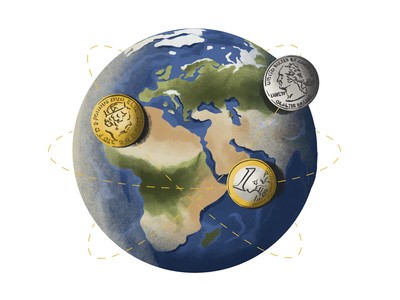Interestingly many of these market anomalies appear to have had some statistical credibility during the 1920s to 1980s but since then, increased market efficiency has almost entirely wiped out any reliability. Nevertheless, one that has worked during 2018 and 2019 is that investors were well advised not to ‘fight the Fed’.
After tapping on the brake during 2018 with four interest rate hikes, the Federal Reserve used 2019 to make an about-turn and stepped on the accelerator with three rate cuts. This dovish (so called because of the bird’s placid nature versus a hawk) policy switch explains why 2018’s challenging performance was followed by a year where more than 90% of asset classes generated a positive return in 2019.
Despite these stellar returns, all has not been well for the global economy under the bonnet. The global manufacturing cycle continued to trend downwards throughout the year, with some regions entering a deep manufacturing recession, US-China relations dominated newspaper headlines (as well as Twitter newsfeeds) and the UK electorate were asked to come back to the voting booth for the fourth time in five years. Such impressive asset performance against so much fundamental uncertainty only enhances the reputation of this as ‘the most disliked bull run in history’.
But it is worth remembering at this time that pessimists are said to often sound clever but rarely be found rich and from a fundamental perspective, the global economy has much to look forward to. Political clarity is hoped to help bolster consumer confidence whilst also marking an end to fiscal austerity – both of which could support global GDP. Added to this, financial conditions should remain supportive as Central Banks are generally expected to maintain their dovish stance during 2020.
Against a reasonably stable macro backdrop, 2019 proved the biggest synchronised global interest rate cut since 2009. It is clear that central bankers do not want to go back into war with recession without first replenishing their ammo; higher rates in the short term would allow Central Banks to subsequently cut rates by more in response to the next recession. That being said, they must be careful that too much growth against very little economic slack does not stir the bark that is yet to bite in higher and difficult to control inflation.
Optimism is rarely advised to be followed blind and the returns seen in 2019 will not persist forever. However, when managing money, it is important to bear in mind opportunity cost and investors are often handsomely rewarded for taking risk whilst the sun is shining. The 2020s are likely to be a decade when investors are required to take advantage of the warmer weather whilst remaining nimble and flexible enough to open the umbrella when darker clouds loom.




